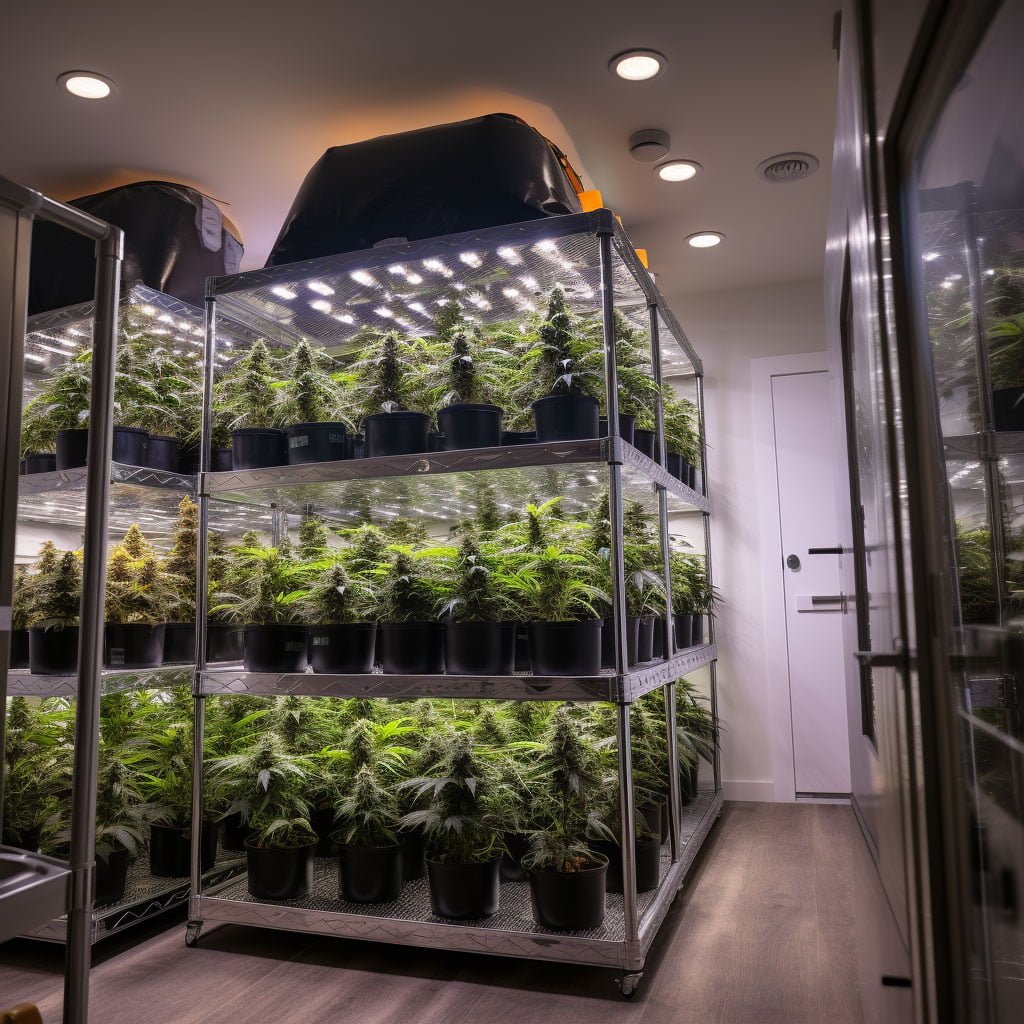As the new year commences, businesses across various sectors remain cautious amid economic uncertainties. In the realm of indoor farming, however, promising trends identified in the previous year are poised to gain further momentum. Despite the challenges, the sector is witnessing the emergence of new crops and the development of previously untapped markets, signifying a potential upsurge in indoor farming activities and investments.
Indoor Farm Trend: Emerging Crops
Hydroponic Fodder for Livestock
The revolutionary concept of hydroponic fodder has piqued the interest of livestock farmers worldwide, offering a reliable and high-quality feed source even in regions where traditional agricultural practices are limited. With the capacity for accelerated growth and a reduced need for resources such as water, nutrients, and space, hydroponic fodder has the potential to significantly increase feed production efficiency. While it has demonstrated its viability in various settings, some studies have raised concerns about its comparative nutritional value and production costs. More information pls contact us>>
Mushrooms on the Rise
Mushrooms, known for their versatile culinary applications and potential health benefits, have emerged as a top trend in the food industry. The surge in demand for various mushroom varieties has spurred innovation and technology adoption within the indoor farming sector. More information pls contact us>>
Exploring New Crops
A wave of experimentation and exploration is underway within the realm of indoor farming, with several non-traditional crops gaining traction. Tree sprouts, saffron, algae, and potatoes are among the unconventional crops that are being increasingly considered viable options for indoor cultivation. Notably, the growing demand for fruit trees has prompted a series of collaborative initiatives and trials focusing on the cultivation of apple trees and other fruit-bearing plants under controlled indoor conditions. Companies Grow have been at the forefront of these endeavors, leveraging cutting-edge techniques such as aeroponics to optimize plant propagation and growth. More information pls contact us>>
Innovative Cultivation Practices
The recent challenges posed by natural disasters, including heatwaves and wildfires, have necessitated innovative approaches to protect and sustain certain plant species. Conifers, known for their susceptibility to such environmental hazards, have found refuge in the controlled environments of indoor farming facilities. Now some indoor farming companies has introduced a combination of artificial intelligence and hydroponic cultivation methods to ensure the optimal growth and quality of saffron crops. The precision and adaptability offered by indoor farming environments enable farmers to maintain an optimal balance of key growth factors, thereby leading to enhanced crop yields and superior product quality. More information pls contact us>>
Indoor Farm Trend: Emerging Markets
Growth in the Middle East
The Middle East, particularly the United Arab Emirates (UAE), has emerged as a hub for the rapid growth and development of vertical farming initiatives. Driven by significant investments and robust support from governmental and private entities, the region has witnessed an upsurge in indoor farming projects aimed at addressing food security and sustainability challenges. Notably, the Vision 2030 plan initiated by the Saudi Arabian government has laid the groundwork for large-scale vertical farming projects, highlighting the region’s commitment to sustainable agricultural practices and innovative food production solutions. More information pls contact us>>
Rising Interest in Asia
Asian countries, grappling with unique challenges such as an aging population, shrinking agricultural labor force, and the adverse impacts of climate change, have increasingly turned to vertical farming as a sustainable and efficient solution. With a focus on leveraging advanced technologies and sustainable practices, Asian countries are redefining their agricultural landscapes and ushering in a new era of urban farming and sustainable food production. More information pls contact us>>
Expanding Activity in New Regions
Beyond the established markets, regions such as Eastern Europe, Latin America, Africa, and Central Asia are witnessing a notable surge in indoor farming activities. Projections from Statista suggest that the Latin American vertical farming market is expected to reach a valuation of USD 1.93 billion, reflecting a significant compound annual growth rate of 21% during this period. Some companies are leading the charge in introducing innovative vertical farming solutions tailored to the unique agricultural and environmental landscapes of these regions.
With the global population rapidly urbanizing, agricultural land becoming scarcer, and climate change posing unprecedented challenges to traditional farming practices, the adoption of indoor farming technologies and practices is seen as a crucial step toward ensuring a sustainable and food-secure future. More information pls contact us>>

